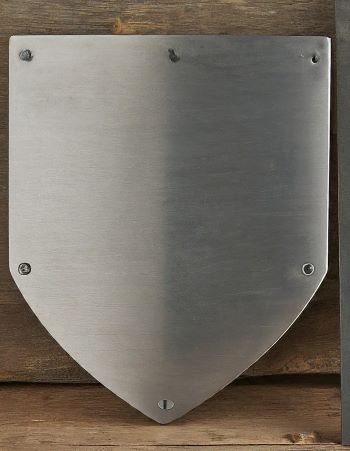In the realm of metals, where elements collide and properties clash, few reign supreme like SS316 stainless steel. But within this titan lies a hidden world, a saga of strength and resilience etched in the annals of hardness. Prepare to dive into the SS316 Hardness Chronicles, where we explore the diverse depths of this remarkable metal’s temper.
What is the Hardness Range of 316 Stainless Steel?
SS316, a prominent member of the stainless steel family, boasts a unique hardness range that sets it apart in various applications. Understanding the intricacies of its hardness is crucial for harnessing its full potential in engineering and manufacturing.
Stainless Steel Composition
Before delving into the hardness specifics, let’s explore the fundamental composition of stainless steel. SS316 is crafted with precision, comprising a blend of alloying elements that contribute to its exceptional properties. This composition forms the foundation for its hardness characteristics.
The Role of Alloying Elements in SS316
Alloying elements play a pivotal role in determining the hardness and overall performance of stainless steel. Unraveling the influence of these elements in SS316 provides valuable insights into the alloy’s resilience, corrosion resistance, and strength.
The Power of Hardness in Stainless Steel
A. Defining Hardness in Material Science
Hardness, a fundamental concept in material science, measures a material’s resistance to deformation, scratching, or penetration. In the context of stainless steel, hardness is a key parameter influencing its mechanical and functional properties.
B. Significance of Hardness in Stainless Steel Performance
The hardness of stainless steel directly impacts its performance in various applications. From withstanding abrasive environments to ensuring structural integrity, the significance of hardness extends across industries.
C. Different Hardness Testing Methods
Various methods are employed to assess the hardness of stainless steel, each offering unique insights. From Rockwell to Vickers hardness tests, understanding these methods provides a comprehensive view of SS316 hardness.
SS316: An In-Depth Profile
A. Origin and Development of SS316
Exploring the origins and developmental milestones of SS316 unveils the evolution of this remarkable stainless steel alloy. Tracing its history provides context for its current-day applications.
B. Chemical Composition and Characteristics
Delving into the chemical composition of SS316 reveals the intricate balance of elements that contribute to its corrosion resistance, strength, and versatility. These characteristics define SS316′s suitability for diverse environments.
C. Unique Properties Setting SS316 Apart
Beyond its hardness, SS316 boasts a spectrum of unique properties. From high-temperature resistance to exceptional weldability, understanding these attributes enhances our appreciation of SS316′s capabilities.
Navigating the SS316 Hardness Scale
A. Exploring the Rockwell Hardness Scale
The Rockwell Hardness Scale serves as a crucial yardstick for measuring the hardness of SS316. Exploring this scale provides insights into how SS316 compares to other materials.
B. Understanding SS316 in the Rockwell C Hardness Range
SS316′s position on the Rockwell C Hardness Scale is a key determinant of its mechanical strength. Understanding this range sheds light on its suitability for specific applications.
C. Comparisons with Other Stainless Steel Grades
Drawing comparisons between SS316 and other stainless steel grades elucidates the distinctive hardness characteristics that make SS316 a preferred choice in engineering.
Impact of SS316 Hardness on Durability
A. Corrosion Resistance and SS316 Hardness
The correlation between SS316 hardness and its unparalleled corrosion resistance is a pivotal factor in its durability. Examining this relationship provides insights into its longevity in challenging environments.
B. Strength and Toughness in SS316
The interplay of strength and toughness in SS316, influenced by its hardness, defines its ability to withstand mechanical stress and impacts. This dynamic balance contributes to its durability.
C. Applications Where SS316 Hardness Shines
From marine environments to chemical processing plants, SS316 hardness finds its application in diverse settings. Understanding where its hardness shines showcases its versatility.
Practical Implications in Engineering
A. SS316 Hardness in Manufacturing Processes
In the realm of manufacturing, the hardness of SS316 plays a pivotal role in shaping it into intricate components. Examining its role in manufacturing processes provides insights into efficient production.
B. Structural Applications of SS316 in Engineering
Structural engineering benefits significantly from SS316′s hardness. Exploring its role in constructing robust frameworks and components sheds light on its importance in the engineering landscape.
C. Balancing Hardness with Machinability in SS316
While hardness is a boon, finding the delicate balance with machinability is essential in manufacturing. Understanding how engineers achieve this equilibrium ensures efficient and precise machining of SS316.
Conclusion
Navigating the depths of SS316 hardness unveils a world of steel strength that transcends conventional boundaries. From its unique composition to the practical implications in engineering, SS316 stands as a testament to the enduring power of stainless steel in diverse applications. As we conclude this exploration, the journey through the SS316 hardness chronicles leaves us with a profound appreciation for the resilience and versatility embedded in this extraordinary alloy.
Post time: Mar-01-2024


